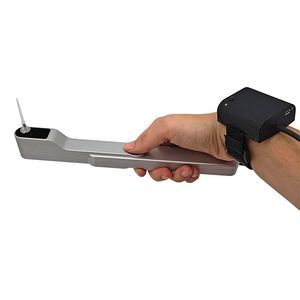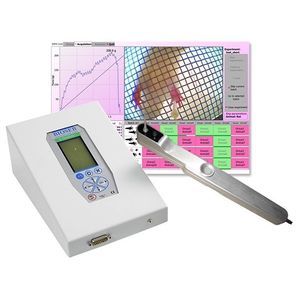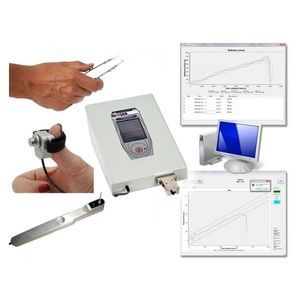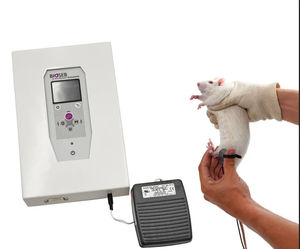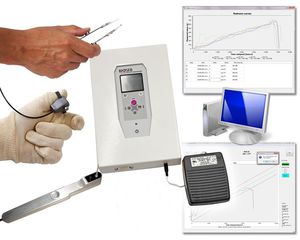
Animal research Von Frey filament BIO-VF-Mfor preclinical researchfor ratsfor mice
Add to favorites
Compare this product
Characteristics
- Applications
- for animal research, for preclinical research
- Animal type
- for rats, for rodents, for mice
- Other characteristics
- mechanical pain
Description
A set of 20 monofilaments based on the Semmes Weinstein monofilament set - featuring retractable filaments to protect the filament and allow the investigator to carry a few around in a pocket
This set of 20 monofilaments (or Von Frey hairs) is based on the Semmes Weinstein monofilament set, but now features retractable filaments to protect the filament and allow the investigator to carry a few around in a pocket.
The Semmes Weinstein set of monofilaments provide an approximately logarithmic scale of actual force, and a linear scale of perceived intensity. They have a long history of effective use in clinical settings, and can be used to diagnose pathologies of hyper- or hypo-aesthesia. Subsets within the set of 20 probes distinguish pathologies on different parts of the body (foot, hand, lip, cheek, etc.).
The operating principle remains the same: when the tip of a fiber of given length and diameter is pressed against the skin at right angles, the force of application increases as long as the researcher continues to advance the probe, until the fiber bends. After the fiber bends, continued advance creates more bend, but not more force of application. This principle makes it possible for the researcher using a hand held probe to apply a reproducible force, within a wide tolerance, to the skin surface.
Rodents exhibit a paw withdrawal reflex when the paw is unexpectedly touched. The Touch Test™ Sensory Evaluator can be used on the Plantar surfaces of the foot of a rat or mouse, and the animal will indicate sensation by pulling back its paw. Replacement filaments available.
Catalogs
No catalogs are available for this product.
See all of Bioseb‘s catalogsExhibitions
Meet this supplier at the following exhibition(s):


Related Searches
- Anatomy model
- Demonstration anatomical model
- Demonstration simulator
- Thermometer
- SpO2 monitor
- Surgical anatomical model
- Digital thermometer
- Surgical simulator
- Infrared thermometer
- Non-contact thermometer
- Whole body anatomical model
- Pad simulator
- Probe thermometer
- Compact pulse oximeter
- Emergency care simulation unit
- Articulated anatomical model
- Suture simulator
- Animal research cage
- Modular animal research cage
- Wound management simulator
*Prices are pre-tax. They exclude delivery charges and customs duties and do not include additional charges for installation or activation options. Prices are indicative only and may vary by country, with changes to the cost of raw materials and exchange rates.


